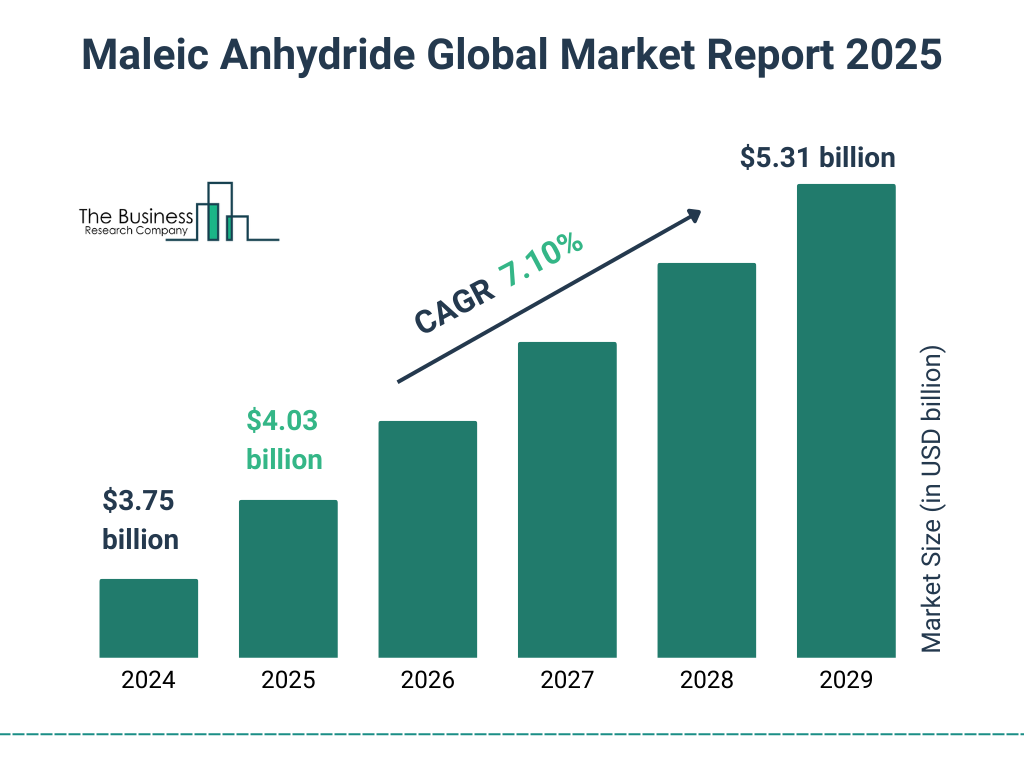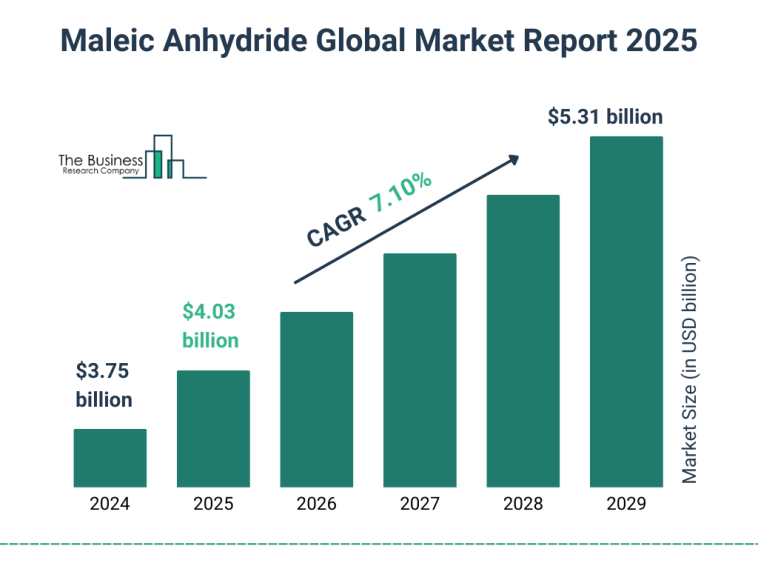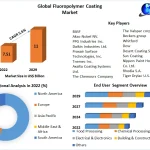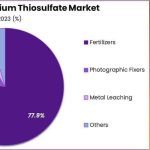
Maleic Anhydride Market Outlook: A Deep Dive into a Growing Global Trend
The maleic anhydride market has emerged as a focal point of discussion among industry experts and business leaders alike. In an era where industrial demand is continually evolving and innovation is the order of the day, the forecast for maleic anhydride is both fascinating and full of promise. This opinion editorial offers a comprehensive view of the market’s expected growth, detailing how its various uses—ranging from automotive manufacturing to construction—are shaping the global economic landscape.
At the heart of this discourse is the steady, anticipated rise in the market. Analysts predict that maleic anhydride will increase from an estimated US$3.2 billion in 2025 to US$4.5 billion by 2035, posting a compound annual growth rate (CAGR) of 3.4%. This steady upward revision reflects a broader trend where manufacturers across several industries are seeking materials that deliver not only superior performance but also an edge in sustainability and efficiency.
Growth Prospects Across Diverse Industries
Maleic anhydride’s versatility underpins its appeal across multiple sectors. As a key component in unsaturated polyester resins (UPRs) and 1,4-butanediol (BDO), its applications span from automotive parts and construction materials to industrial coatings and advanced composites. With industries increasingly demanding materials that combine lightweight characteristics and corrosion resistance, maleic anhydride proves to be an essential building block in modern manufacturing.
The automotive industry, in particular, has begun to prioritize lighter construction materials without compromising safety or durability. This is one of the driving forces behind the surge in demand for unsaturated polyester resins; manufacturers are aiming to improve fuel efficiency and reduce emissions by using composites that incorporate maleic anhydride. Similarly, the construction sector benefits from enhanced materials that boost the longevity and strength of building components.
Understanding the Applications and Their Impact
Maleic anhydride plays a crucial role in a variety of applications. To better visualize its reach, consider the following list of primary uses:
- Unsaturated Polyester Resins (UPRs): Widely used in reinforced plastics, fiberglass, and industrial coatings.
- 1,4-Butanediol (BDO): Increasingly important for the production of spandex, polyurethanes, and high-performance plastics.
- Lubricant Additives and Coatings: Employed in engine oils and advanced surface coatings, contributing to performance and durability.
- Agrochemicals and Detergents: Utilized in pesticide production, paper sizing, and water treatment applications.
Each of these applications presents its own set of tricky parts and tangled issues. For example, the automotive sector continuously faces the challenge of balancing safety with the need to reduce overall vehicle weight. In the construction arena, the demand is for materials that not only provide structural integrity but also contribute to energy efficiency and environmental safety. This intricate balancing act is a testament to the multifaceted contributions of maleic anhydride.
Analyzing the Demand in Automotive, Construction, and Industrial Coatings
One cannot discuss the future of maleic anhydride without taking a closer look at its impact on automotive, construction, and industrial coatings. These three industries are among the largest consumers of materials derived from maleic anhydride. The following table outlines the primary benefits that drive its adoption in each sector:
| Industry Sector | Key Benefits |
|---|---|
| Automotive | Lightweight composites, improved fuel efficiency, corrosion resistance |
| Construction | Enhanced durability, strength in building materials, support for reinforced plastics |
| Industrial Coatings | High-performance surface finishes, longevity, adherence to environmental standards |
The growth factors in these sectors are not isolated; they are interlinked with broader industrial shifts. Manufacturers are striving to reduce the environmental footprint of their products while simultaneously addressing consumer demand for safer, more efficient technologies. This dual focus is shaping how materials like maleic anhydride are developed and deployed on a global scale.
Regional Perspectives: United States and China
Geographical factors are another critical element in assessing the maleic anhydride market. Two regions in particular—the United States and China—stand out for their dynamic industrial activities and innovation-driven economies.
United States: In America, the market is bolstered by continuous infrastructure development and a robust automotive sector. The rising use of UPRs in reinforced plastics and fiberglass is significantly driving demand. American manufacturers are increasingly leaning on maleic anhydride to produce materials that support diverse applications, from marine manufacturing to industrial components.
China: As a global manufacturing powerhouse, China has embraced maleic anhydride as an essential component in its industrial ecosystem. With rapid economic growth bolstered by significant investments in sectors such as automotive, electronics, and construction, the demand for maleic anhydride is swiftly escalating. The integration of maleic anhydride in the production of UPRs and BDO highlights China’s commitment to maintaining its competitive edge in industrial innovation.
The regional differences in growth underscore not only separate market architectures but also distinct industrial strategies. In the United States, the focus tends toward enhancing product durability and efficiency, while in China, expansive manufacturing capacities and technological advancements lead the charge.
Emerging Process Innovations and Sustainability Efforts
The journey toward improved efficiency in maleic anhydride production is not without its tricky parts and confusing bits. However, the industry is making significant strides in process innovation. Companies are continually investing in new catalyst systems that are designed to boost yields and reduce emissions—key moves that help the market transition to more environmentally friendly practices.
One notable trend is the development of bio-based alternatives. Emerging technologies involving bio‑succinic acid routes are creating sustainable pathways for the production of BDO and related restructured compounds. Some industry players, such as JM Davy, are already experimenting with bio‑succinic feeds as an eco‑friendly substitute. This evolution presents an exciting opportunity to reconcile industrial growth with environmental responsibility.
Sustainable Materials and Eco-Friendly Innovations
The move toward sustainable materials is both exciting and nerve-racking, given the full-of-problems environment in which companies operate today. The industry is now under increasing pressure to offer super important solutions that address both performance and sustainability. Notably, the shift toward recyclable plastics and eco-friendly composites calls for a reevaluation of established manufacturing processes.
Manufacturers have started to see that the environmental benefits of maleic anhydride can extend beyond its immediate applications. For example, integrating it into eco-friendly polymers aligns well with the principles of the circular economy—a system where resource efficiency and reduced waste form the core of production practices. Leading chemical companies have embraced this vision, implementing innovations that make the most of every molecule while reducing harmful emissions.
Competitive Landscape: Industry Leaders and Strategic Moves
Within the maleic anhydride market, competition is both dynamic and loaded with issues. Major companies are actively working to find their path through the tangled issues of increasing demand and evolving environmental standards. Firms like Huntsman Corporation and LANXESS AG have positioned themselves at the forefront by launching initiatives that emphasize product innovation and regional expansion.
Across different regions, several notable players are shaping market dynamics:
- Huntsman Corporation: Has recently restructured its European production strategy, shifting its focus to plants in Florida and Louisiana. This move came after a review of less profitable operations and represents a broader strategic reorientation toward efficiency.
- LANXESS AG: Continues to enhance product portfolios, especially targeting high-performance sectors where automotive coatings and UPRs are in high demand.
- Nippon Shokubai Co., Ltd. and Mitsubishi Chemical Corporation: Bolstering their positions in the Asia-Pacific region, these companies are capitalizing on increased demand for lightweight composites and reinforced materials.
- Ashland Inc.: Focuses on niche markets in North America, particularly serving marine and industrial applications with tailored solutions.
- DSM N.V.: Invests heavily in sustainable innovation, integrating maleic anhydride into eco-friendly polymer systems that support recycling and waste reduction.
These strategic moves highlight how companies are not just obtaining advanced materials—they are steering their product lines to align with both industry demands and the subtle parts of environmental responsibility. The competitive landscape might seem intimidating at times, but it also offers a myriad of opportunities for those who can figure a path through these challenges.
Recent Developments and their Significance
Recent developments in the market have underscored the importance of agility and strategic reassessment. In mid-2025, for instance, Huntsman Corporation announced the closure of its maleic anhydride facility in Moers, Germany, following a strategic review. This closure highlights how even well-established companies must steer through tricky parts, such as unprofitable operations, to remain competitive.
The decision was accompanied by a one-time, non-cash asset impairment estimated at around US$75 million. Though this may sound overwhelming at first glance, it also reflects a recalibration of resources—redirecting focus toward markets and technologies with better returns. Similarly, Thirumalai Chemicals Ltd. introduced an eco-friendly grade of maleic anhydride in 2024, specifically improved for the coatings industry. This product offers up to 30% better adhesion and lower emissions, thereby aligning with environmental mandates while enhancing product performance.
Key Takeaways from Recent Strategic Shifts
These actions signal an industry-wide acknowledgment that sustainability is not just a buzzword but a must-have criterion for long-term success. The following points encapsulate the critical insights:
- Realignment of Production Facilities: Companies are adjusting their geographical footprints based on profitability, efficiency, and market demand.
- Investment in Eco-Friendly Innovations: Continuous R&D aimed at producing materials with lower emissions and improved performance.
- Emphasis on Tailored Solutions: Focused product lines that cater to specific market segments—from marine applications to high-performance industrial coatings.
- Strategic Risk Management: Proactive responses to market challenges, including asset impairments and capacity reallocation.
All of these points underscore that while the path forward may be loaded with challenges, the industry is actively working through them with calculated risk-taking and innovative thinking.
Opportunities and Challenging Parts in the Global Market
Of course, no emerging market can claim a path free of confusing bits and overwhelming issues. The global maleic anhydride market is riddled with tensions relating to supply chain disruptions, fluctuating raw material costs, and the regulatory environment. These tricky parts create a scenario where companies must continuously adapt to changing conditions and figure a path around obstacles that may seem, at times, nerve-racking.
Understanding these market challenges calls for a candid discussion of both the opportunities and the pitfalls. Here are a few of the critical issues that industry insiders must address:
- Supply Chain Vulnerabilities: As global trade complexities persist, ensuring a stable supply of raw materials such as n-butane and benzene remains critical.
- Regulatory Hurdles: Compliance with environmental standards can be both costly and complicated, requiring constant updates to manufacturing protocols.
- Technological Adaptation: Rapid shifts in technology demand constant innovation, which can sometimes result in confusing bits requiring further process reengineering.
- Market Competition: The competitive landscape is always in flux, making it imperative for companies to continuously refine their strategies.
Despite these challenges, the overall outlook for maleic anhydride remains positive. Market players are increasingly adopting risk management strategies that allow them to steer through these obstacles while laying the groundwork for sustained growth.
What the Future Holds: Strategic Recommendations
For those invested in or tracking the maleic anhydride market, several strategic recommendations emerge from the recent trends and market dynamics:
- Invest in Process Innovations: Continued focus on new catalyst systems and process technologies will be super important for boosting yields and minimizing emissions.
- Adopt Sustainable Practices: Incorporating bio‑based alternatives and eco-friendly polymers can help companies align with global environmental targets.
- Expand Geographic Reach: Diversifying production facilities across key regions such as North America, Asia-Pacific, and Europe will help cushion against regional market fluctuations.
- Target Niche Market Segments: Understanding and serving niche segments—ranging from industrial coatings to advanced composites—offers a competitive advantage amid growing demand.
- Monitor Regulatory Changes: Staying informed about evolving regulations will help companies manage the nerve-racking twists and turns of compliance without significant disruption.
Each of these recommendations is rooted in the idea that companies must get into the nitty-gritty and identify both strengths and areas needing improvement. Whether it’s leveraging advanced technologies or tapping into niche markets, the key lies in being proactive and responsive to market signals.
Economic Implications and the Broader Business Environment
The anticipated growth in the maleic anhydride market isn’t happening in isolation. It is part of a broader trend where global industrial manufacturing and economic structures are undergoing transformation. With enhanced infrastructure development and modernization in many industries, the economic impact of increased maleic anhydride use is becoming more pronounced.
Several factors contribute to this broader economic narrative:
- Investment in Infrastructure: The surge in construction projects and commercial development directly influences material demand.
- Technological Advancements: Shifts toward automation and precision manufacturing drive the need for high-performance materials.
- Sustainability Goals: A global shift toward eco-friendly production methods is accelerating the adoption of sustainable chemical processes.
- International Trade Dynamics: Trade policies, supply chain efficiencies, and cross-border investments all play a role in shaping the market.
When these factors converge, industries find themselves managing their way through a full-of-problems scenario that is both complicated and rich with opportunity. For small businesses and multinational corporations alike, staying ahead of these trends is essential to secure a competitive edge.
Long-Term Strategic Outlook and Market Resilience
Looking further ahead, the market for maleic anhydride is poised to continue expanding, albeit with its share of challenging parts along the way. Long-term strategic planning will be key in finding the right balance between immediate gains and future returns. Companies that are able to dig into the fine points of production efficiency, market demand, and sustainability are likely to emerge as leaders in the sector.
Several strategic themes are emerging as being particularly influential:
- Diversification of Applications: As industries discover more uses for maleic anhydride, from cutting-edge composites to novel chemical formulations, diversification will mitigate the risk of overreliance on any single sector.
- Technological Investment: Enhancing R&D capabilities and adopting new manufacturing processes will be super important for maintaining a stable market position.
- Global Expansion: While regional markets offer unique challenges, embracing a global perspective will ensure that companies can tap into diverse revenue streams and buffer against localized downturns.
- Environmental Stewardship: A commitment to sustainable practices not only helps meet regulatory standards but also caters to a growing segment of eco-conscious consumers.
The resilience of the maleic anhydride market is not merely a function of economic cycles—it is also rooted in the ability of companies to work through tricky parts and navigate the subtle differences between emerging technologies. For those ready to take the wheel, the rewards include not only steady financial returns but also the satisfaction of contributing to a more sustainable industrial future.
Final Thoughts: Embracing the Promise Amidst the Challenges
The current market forecast for maleic anhydride indicates an exciting era for industrial innovation and economic growth. With projections pointing to a rise from US$3.2 billion to US$4.5 billion over the next decade, largely driven by robust demand in automotive, construction, and industrial coatings, the future looks promising. However, as with any growing field, there are plenty of nerve-racking, confusing bits and full-of-problems challenges to reckon with.
Industry players must be prepared to tackle the tangled issues of regulatory changes, supply chain uncertainties, and evolving technology paradigms. Companies that manage to find their way around these obstacles by embracing innovation, adopting sustainable processes, and targeting niche market segments will likely find themselves at the forefront of this evolving landscape.
Ultimately, the maleic anhydride market serves as a microcosm of the broader industrial sector. It reflects both the raw potential and the subtle complexities of modern manufacturing. By staying informed, investing in advanced technologies, and committing to environmental stewardship, businesses can effectively take a closer look at future opportunities and carve out a successful path in a competitive global marketplace.
In conclusion, the maleic anhydride market is a shining example of how industries across the board are rethinking traditional materials and embracing innovative alternatives. It is a story of growth, transformation, and resilience—a narrative that underscores the importance of staying agile in today’s fast-changing economic environment. As the market continues to evolve, every stakeholder, from multinational corporations to small business owners, has an opportunity to contribute to and benefit from this dynamic, ever-changing industrial landscape.
For industry observers and decision-makers, the time is ripe to dive in, get into the nitty-gritty of these emerging trends, and shape strategies that leverage both traditional strengths and future innovations. The road ahead may be winding and loaded with challenges, but with proactive measures and a commitment to sustainable practices, the promise of the maleic anhydride market is not only super important—it’s achievable.
It remains critical for businesses to work through the confusing bits and subtle details to harness the full potential of maleic anhydride across diverse applications. Whether it’s through innovative product development, strategic geographical expansion, or a renewed focus on environmental responsibility, the next decade holds immense promise for those ready to figure a path forward in this exciting arena.
By continuously monitoring market developments, reexamining production processes, and remaining open to new technological advancements, companies can not only manage their way through today’s challenges—they can also set the stage for sustained growth and resilience well into the future. The evolution of the maleic anhydride market is a testament to human ingenuity and the relentless drive to overcome the tricky parts and tangled issues of a complex industrial world.
Originally Post From https://www.einpresswire.com/article/830018689/maleic-anhydride-market-set-to-surge-at-3-4-cagr-to-reach-us-4-5-billion-by-2035-fact-mr-report
Read more about this topic at
2025 Chemical Industry Outlook
Homepage – Chemical Market Analytics By OPIS, a Dow …


